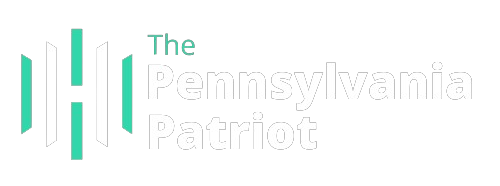In a Wednesday phone call with leaders of the National Black Lung Association and other coal miners’ organizations, U.S. Sen. Bob Casey (D-Pennsylvania) and U.S. Rep. Morgan McGarvey (D-Kentucky) introduced legislation to make it easier for coal miners with black lung disease and their families to access benefits.
But the group also stressed amendment to the budget act for the Mine Safety and Health Administration (MSHA) of the U.S. Department of Labor, authored by U.S. Rep. Scott Perry (R-Pa.). The amendment would potentially halt a rule proposed in June by MSHA to limit the amount of silica dust allowed in U.S. mines, thereby reducing miners’ exposure to silica dust.
According to MSHA, inhaling silica dust, a byproduct of mining, can cause black lung disease and other lung diseases.
“Unfortunately, before MSHA could consider comments regarding pneumoconiosis and other issues related to miners’ activities, Representative Scott Perry followed the mining executives’ lead and published amendments that would have prevented MSHA from implementing the rule,” said Quenton King of the environmental group Appalachian Voices.
It seems like companies are doing everything they can to survive, hoping that we will die.
– Gary Hairston, President, National Black Lung Association
He said health experts and miner safety advocates have been asking the federal government for decades to lower the level of silica miners can be exposed to. In June, before the proposed rule was announced, Casey and fellow Democratic senators John Fetterman of Pennsylvania, Mark Warner and Tim Kaine of Virginia, Joe Manchin of West Virginia and Sherrod Brown of Ohio wrote to the Office of Management and Budget urging action on the announcement of the up-to-date silica standard.
“Thousands of coal miners and other mining industries will benefit from silica protection,” King said Wednesday.
A spokesman for Perry’s office said Wednesday that he proposed the amendment because the proposed rule applies to any mine under MSHA’s jurisdiction, not just coal mines.“The ‘one size fits all’ approach is made even worse when you consider that MSHA failed to include a threshold for applicability, ensuring that it applies only where necessary to improve safety, and failed to ensure that the medical surveillance provisions were applied on a risk-based basis,” Lauren Muglia, Perry’s chief of staff, told the Capital-Star in an email.
Perry disputes MSHA’s economic analysis of the rule, which he says “falsely states that it will not have a significant impact,” adding that the costs are so understated “as to call into question the skill and motives of the individuals who made those estimates,” Muglia wrote.
“Put simply, this proposed rule is just the latest attempt by Democrats to close down American mines and deprive miners of their livelihoods — and that will be the result if this proposed rule becomes law,” she added.
The federal Coal Mine Health and Safety Act of 1969 established the Coal Mine Pneumoconiosis Benefit Program, which provides monthly payments and medical treatment to miners who become totally disabled due to pneumoconiosis, as well as to the spouses and dependents of miners who die from pneumoconiosis. Benefits are paid either by the mining company that employed the miner or from a trust fund maintained by a tax that mine operators pay on every tonne sold.
But applying for and receiving these benefits can be a tedious process, with miners and their families having to prove that a miner’s case is sedate enough to qualify. And mining companies can often complicate the process by disputing miners’ claims.
“It seems like companies are doing everything they can to keep us waiting for death,” Gary Hairston, president of the National Black Lung Association, said Wednesday.
Vonda Robinson, vice president of the National Black Lung Association, said she works with widows to support them access benefits, which is often a long, grueling process that has affected her personally. “My husband was diagnosed at 47. He’s 57. And he’s thinking about a lung transplant. I could be in his shoes one day,” Robinson said.
GET MORNING HEADLINES DELIVERED TO YOUR INBOX
This An Act on improving benefits for people with black lung disease would strengthen the benefits program by giving miners better access to medical information used to decide their benefit claims and requiring the Department of Labor to reduce the backlog of black lung benefit claims. Black lung clinics could operate federal funds to support individuals file claims, and cost-of-living benefit increases would be restored.
“Just because the pneumoconiosis program has been going on for years, decades, doesn’t mean it’s working,” Casey said Wednesday. “So many miners are waiting year after year after year after retirement, after they’ve done all their work, and we haven’t kept our promise to them and their families. We need to change that and pass legislation.”
This Act on assistance for survivors after miners’ death would make it easier for surviving family members of miners who died from black lung disease to access benefits. It would shift the burden of proof The miner’s death was caused by black lung disease, not his surviving spouse, meaning mining companies must prove that black lung disease played no role in the miner’s death before they disqualify someone from receiving benefits.
Under current benefit scheme rules, survivors must prove that a significant cause of death was pneumoconiosis, which can sometimes be challenging to prove if a post-mortem examination shows that a related condition was the cause.
“We know that coal companies will defend themselves against their employees in this case, and this will ensure that legal costs are covered as part of this,” McGarvey said. “We’re making it easier for families to access these benefits, not harder for them.”

